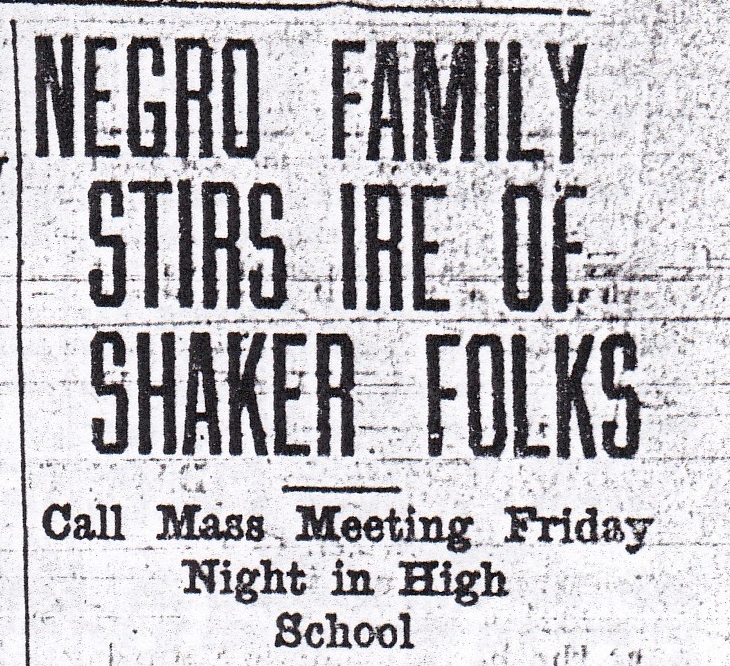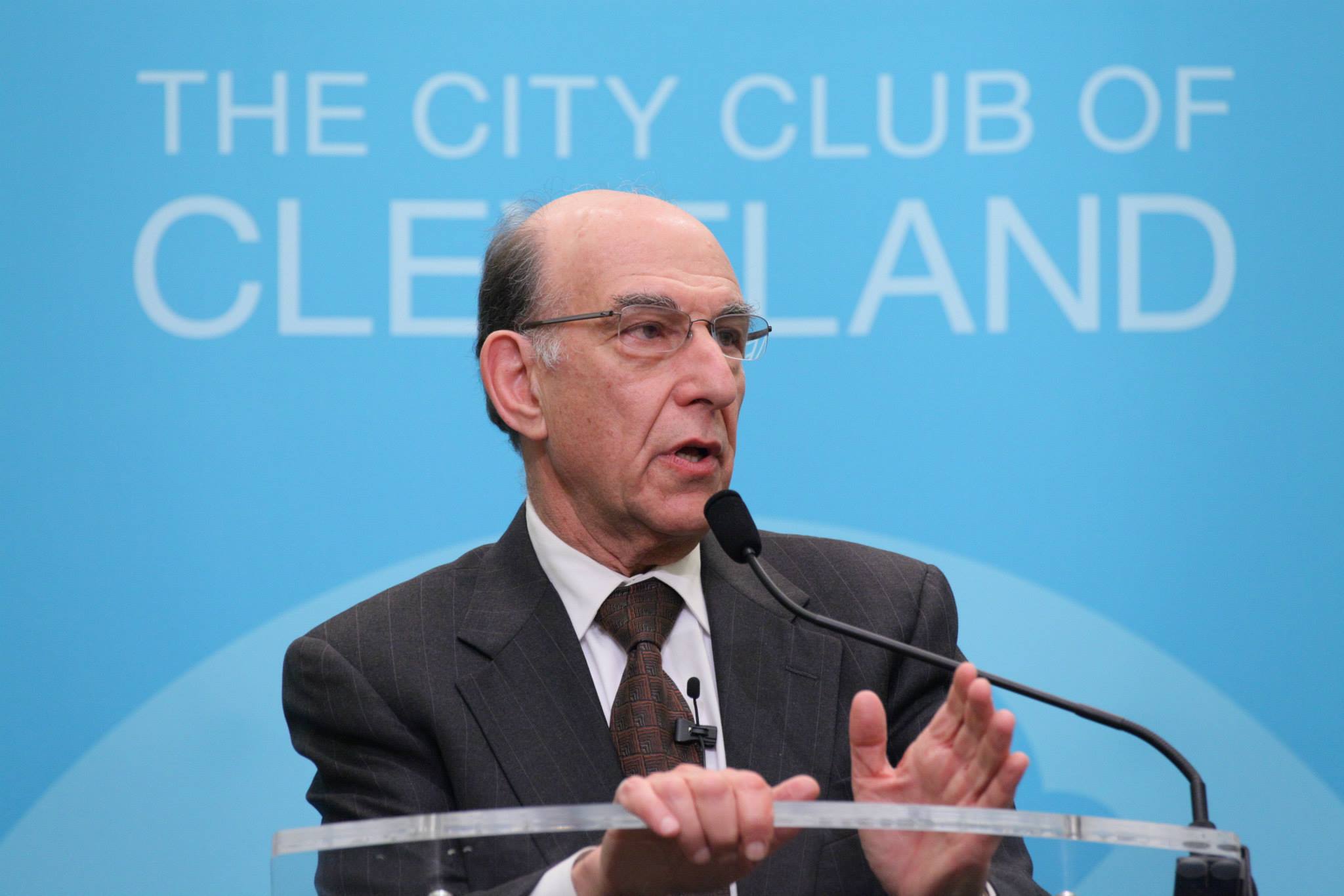 Where we live is bedrock to our identities.
Where we live is bedrock to our identities.
For half of the 20th century, racial covenants embedded in the property deeds of homes in Shaker Heights, Ohio, and nearby Forest Hills “deferred but did not defeat the suburban dreams of Jews and African Americans,” reports historian Marian Morton.
An emeritus professor of John Carroll University, Morton gave a lively, standing-room-only talk at the Maltz Museum of Jewish Heritage in Beachwood, Ohio. She showed a 1930 advertisement for new homes in Forest Hills, a neighborhood straddling Cleveland Heights and East Cleveland, which promised “surroundings . . . where your neighbors are inevitably people of tastes in common with yours . . . The careful restrictions placed on Forest Hills today will not be lowered.”
Racial covenants rested on the assumption that undesirable racial groups lowered property values. The U.S. Supreme Court ruled them unconstitutional for cities in 1917, but in 1926 declared that private individuals or corporations could engage in them.
“I hate the 1920s,” Morton told her audience. “The only thing good that happened was women got the right to vote in 1920. The bad? A resurgence of the Ku Klux Klan, federal immigration restrictions, and restrictive covenants targeting ‘unwanted races and Hebrews.’”
Shaker Heights began as a planned community, developed by Oris Paxton and Mantis James Van Sweringen, who bought 1,200 acres in 1906 from the religious Shakers. The brothers oversaw early property deeds that allowed growing flowers, but not vegetables, and prohibited “barns, stables, or water closets.” Their new village thrived; its population soared from 200 in 1910 to 1,600 in 1920.
Early in 1925, the Van Sweringens began to add restrictions on resale of Shaker Heights homes. Two ugly racial incidents marred that year: the bombing of a black doctor’s home in University Circle and an attack on the Huntington Road residence of a second physician, Dr. Edward A. Bailey, by angry whites.
Virginia Dawson, a Shaker Heights historian, spoke up during Morton’s presentation to add details. She said that when Bailey’s chauffer tried to clear the crowd by firing shots in the air, the Shaker Heights police surrounded the house and set up a search of everyone going inside and out. The Bailey family sued the city for harassment in 1925, and lost. They moved away.
Even as restrictive covenants proliferated, Morton noted, they were worded cagily to avoid naming who was excluded. The homeowner was required to obtain the development owner’s permission on any sale or lease, or get the nod of surrounding neighbors to transfer the property.
“In 1948 the Supreme Court had ruled that restrictive covenants could not be legally enforced,” Morton writes in an elaboration of her talk for the Teaching Cleveland web site. “The court decision did not preclude informal or extra-legal means of enforcing covenants, however, and the vagueness of the Shaker Heights and Forest Hills covenants meant that any group considered undesirable could still be excluded.”
By mid-century, African Americans, “like other Americans in the prosperous postwar period . . . dreamed of green lawns, fine homes, and social acceptance,” she writes, adding that “World War II brought a big shift in racial and religious tolerance.”
Still, Jews and blacks faced restrictive covenants, and blacks occasionally met outright violence. When the Shaker Heights home of the prominent attorney John Peggs was bombed in 1954, some community groups were galvanized to fight blockbusting and white flight. Still, in 1970, Cleveland Heights was only two percent black. “I’m ashamed to admit that blacks were most unwelcome in Cleveland Heights,” said Morton, who has lived in the Heights for 48 years.
Nevertheless, the U.S. Fair Housing Act of 1968 was a breakthrough, and both Shaker and Cleveland Heights passed fair housing legislation.
And, with each passing decade, Morton observed, restrictive covenants became harder to enforce. They didn’t cover all properties, and the region grew more tolerant. Jews had been prominent merchants on Coventry Road since the 1920s. Members of Morton’s audience stood up to recall personal incidents of being rejected as home buyers. One man asserted that in 1937, “no blacks, no Jews, no Catholics, no Italians, and no bartenders” were allowed in Forest Hills. Another recounted his family being made uncomfortable for being Jewish. Morton noted that the Van Sweringens made it difficult for a Catholic Church to break ground in Shaker Heights; St. Dominic had a difficult time establishing itself.
“Shaker Heights and Cleveland Heights today pride themselves on their racial, religious and economic diversity, a diversity that their founders never imagined,” Morton writes. “Suburbia is still about dreams – same dreams, different dreamers.”
Mark Davidson, manager of school and family programs at the Maltz Museum, saw encouraging signs. “We want to be part of the new Cleveland that is being born – friendlier, let’s say, and more willing to visit each other’s turf.”




Margaret Simon
June 30, 2014
If your readers want to read Marian Morton’s books, they can check them out at the Shaker Library. http://shakerlibrary.bibliocommons.com/search?commit=Search&page=1&q=marian+morton&search_category=author&t=author&utf8=%E2%9C%93
Curious about Shaker Heights? Be sure to pay a visit to our Local History collection where you can discover interesting facts about the city. You can also read the library’s Informal History of Shaker Heights by downloading it at http://shakerlibrary.org/wp-content/uploads/75years-cover.pdf